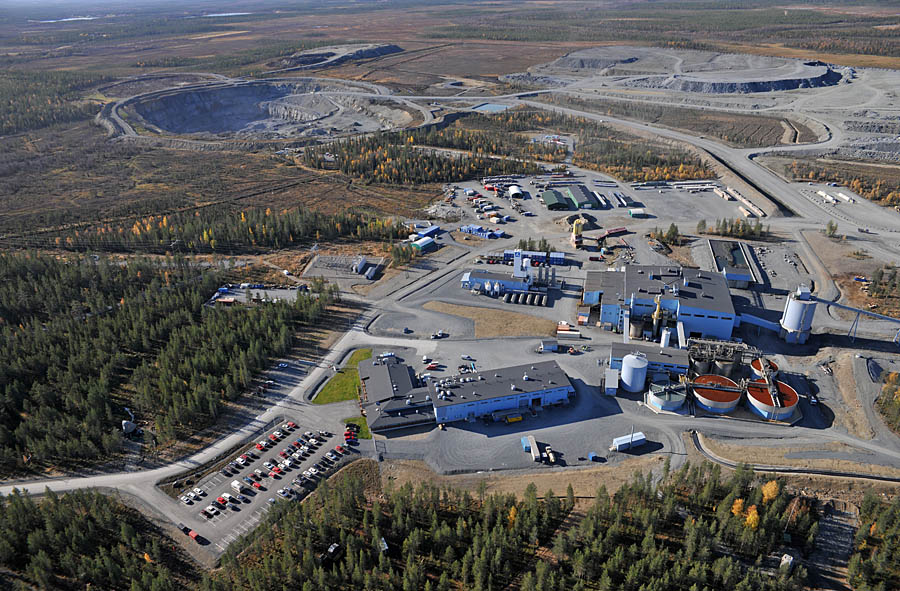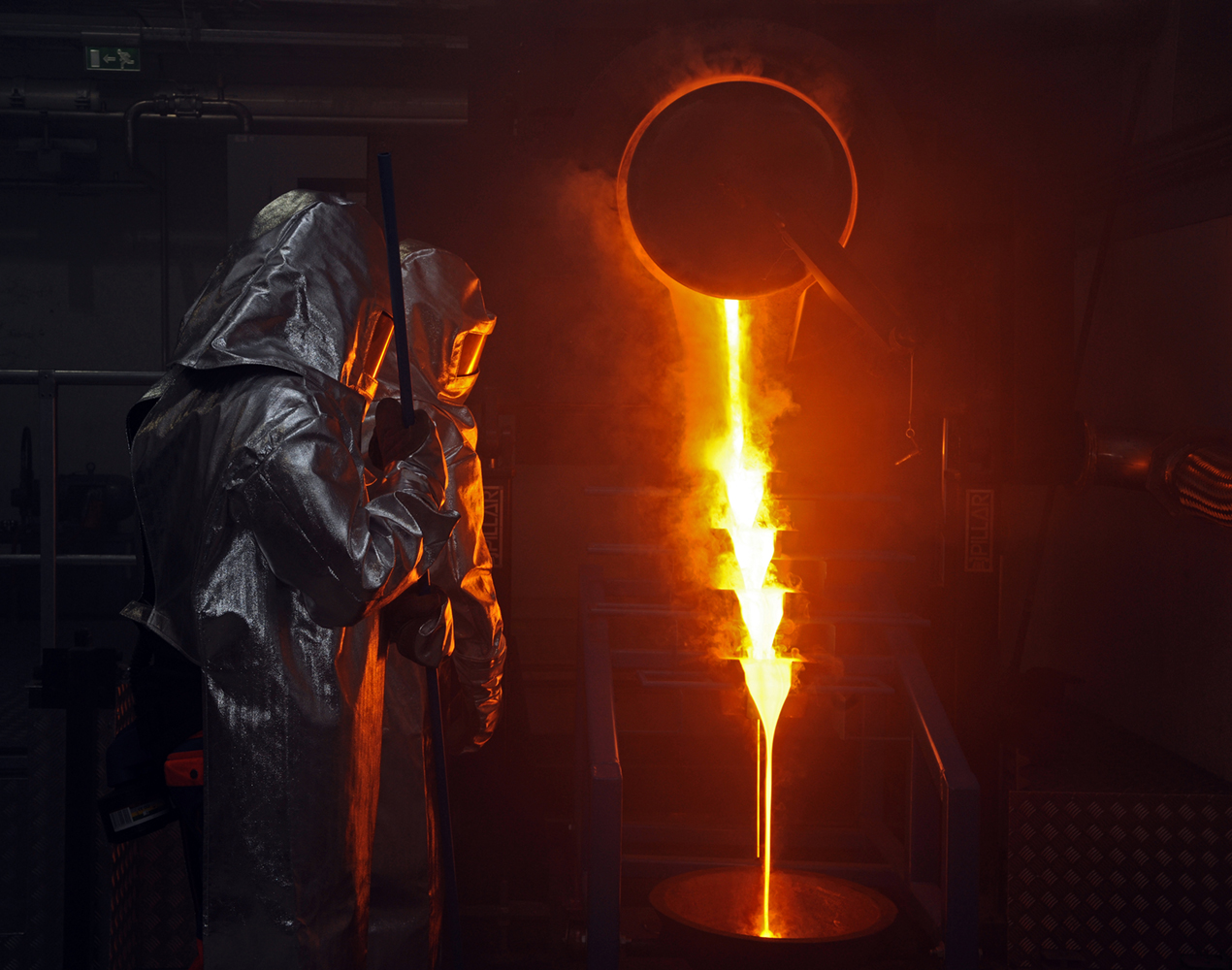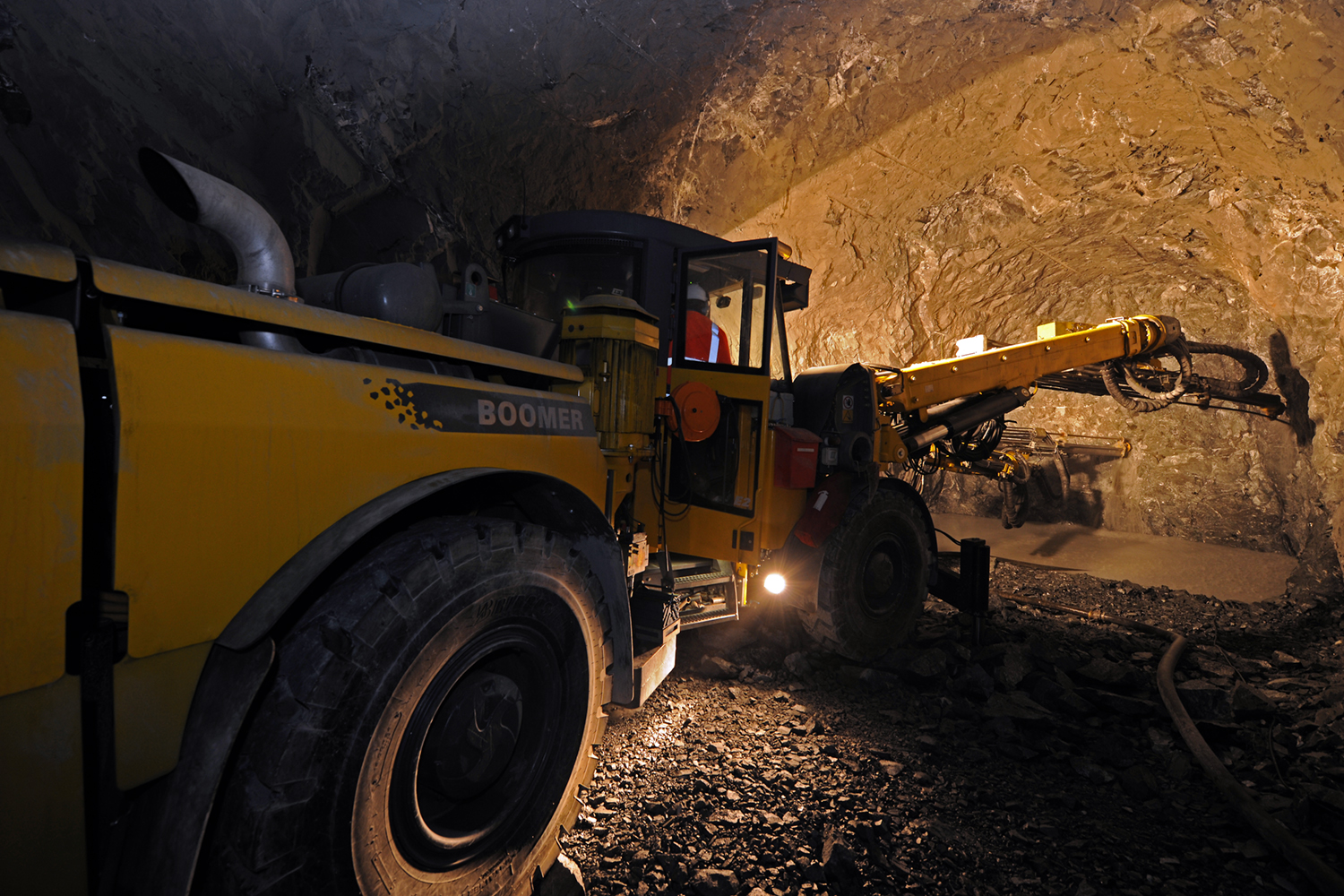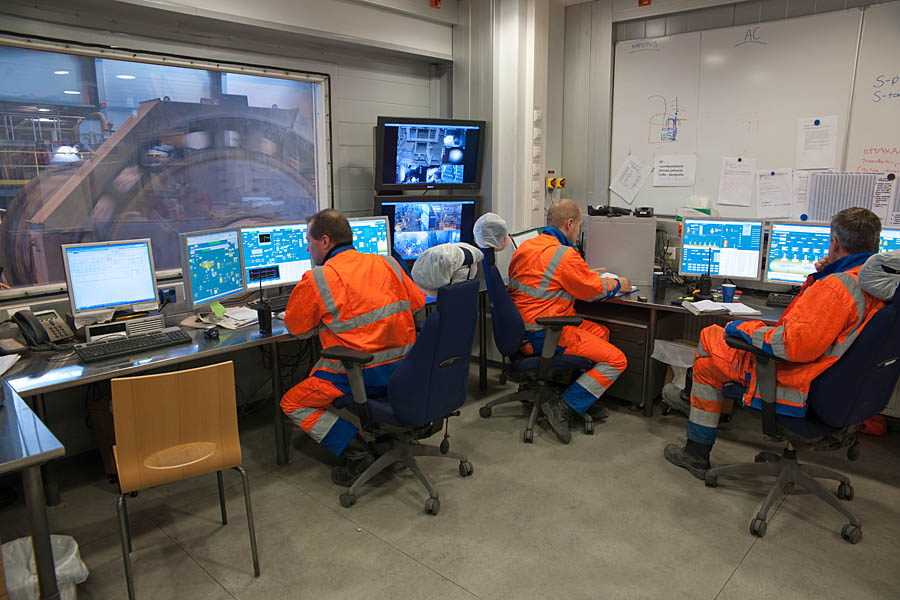Black Box is along digging gold in Lapland
 The biggest gold mine in Europe operates in Kittila, Finland. Gold has traditionally been found in Lapland for more than a century, but this is something totally different to the gold washing of old days. In the modern production plant gold is extracted from the ore in a complicated process and the process control systems use Black Box technology to transfer images between the control room and computer centre.
The biggest gold mine in Europe operates in Kittila, Finland. Gold has traditionally been found in Lapland for more than a century, but this is something totally different to the gold washing of old days. In the modern production plant gold is extracted from the ore in a complicated process and the process control systems use Black Box technology to transfer images between the control room and computer centre.
Agnico-Eagle is a Canadian mining company that besides Canada has mining in Finland and start-ups in the US and Mexico. The company has been digging gold continuously for more than 30 years, mainly in underground mines. Since 1972 the company has produced over four million ounces of gold (125 metric tons) with the lowest production cost in North-American mining industry.
 There is a lot of gold in Lapland
There is a lot of gold in Lapland
The Kittila gold deposit was found in 1986 while building a road. The deposit was sold in a public auction in 1998 to Swedish company Riddarhyttan, which Agnico-Eagle acquired in 2005. The first pour (moulding a gold bar) in Kittila took place in January 14th, 2009 and commercial production started in May 2009. At the end of June there was 256 permanent employees working in the mine and refinery.
Only about two percent of the gold in the deposit is free metallic gold. The rest is locked inside sulphide minerals. During 2009 they have diamond drilled more than 67,500 metres of examination holes to survey the area thoroughly. Deposits have been found at a radius of 25 kilometres in the area but the main deposit is in five parts in an area 4.5 kilometres long.
The total amount of gold washed in Lapland during more than a hundred years is believed to be about 1,000 kg gold, one metric ton. The Kittila deposit is estimated to hold 21.4 million tons of ore, containing on average 4.7 grams of gold in a ton of ore. This means about one hundred tons of gold. Digging will go on for about 13 years.
 Gold digging is heavy excavating
Gold digging is heavy excavating
At the moment they dig gold in Kittila in a large pit, which will gradually cover some 30 hectares and become 160 metres deep. The ore is quarried in funnels of 7.5 metres wide with buffered explosion technology. The blast stones are loaded assorting with hydraulic loaders in trucks that take 90 tons at a time. The ore is taken to crushing and the stone to storage fields. About 3,000 tons of ore is fed in the refining process daily.
It is estimated there will be ore in the pit for five years. At the same time access ramps are dug into the underground mine caves all the way about half a kilometre deep. Underground there will be mine caves 25-40 metres high dug, about five kilometres each year, starting in 2010.
The ore is hauled on the surface with trucks through a three-kilometre long ramp system. When the caves are empty of ore, they will be filled with stone mixed with cement, so digging the next caves will be safe.
A complicated refining process
As the ore is hauled on the surface and transported in the refinery, the actual process begins. The ore is crushed, grinded, floated, oxidated under pressure and carbon concentrated. Agnico-Eagle uses oxidating under pressure (an autoclave) only in Kittila, where it is needed because of the "unwilling" nature of the ore. The gold from concentration process is separated from carbon and refined from the solution electrolytically. Then the gold is melted and moulded – poured – into bars. The mine is estimated to preserve more than 83 percent of the gold in the ore during its operation.

In the Kittila mine computer centre they also use a Black Box ServSelect III switch for two operators to control up to 16 servers simultaneously. The comprehensive features of the ServSelect make control of the servers effective and flexible. Because ServSelect also gives the BIOS level control of the computers, keeping things under control is easy regardless the shape and operating system of the servers.
Black Box is an old friend
– I already knew of Black Box, says Mr. Rantanen. – When building the system became topical, I knew immediately whom to contact. We started building the mine in 2006 and the time to get the control system was in 2008. The first floating refinings were made in September and since then the Black Box equipment has been working without a problem.
The Black Box system may be a small part of the entire mine's equipment, but when handling thousands of tons of ore every day, even the small parts have to work flawlessly, emphasises Mr. Rantanen. – Black Box experts really understood our demands and were quickly able to propose the best suitable system for our needs. The right equipment and accessories came at the right time and Black Box proved to be the perfect supplier for this project.